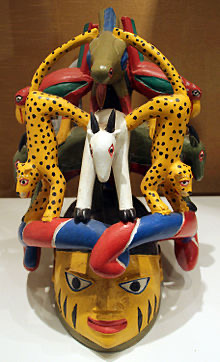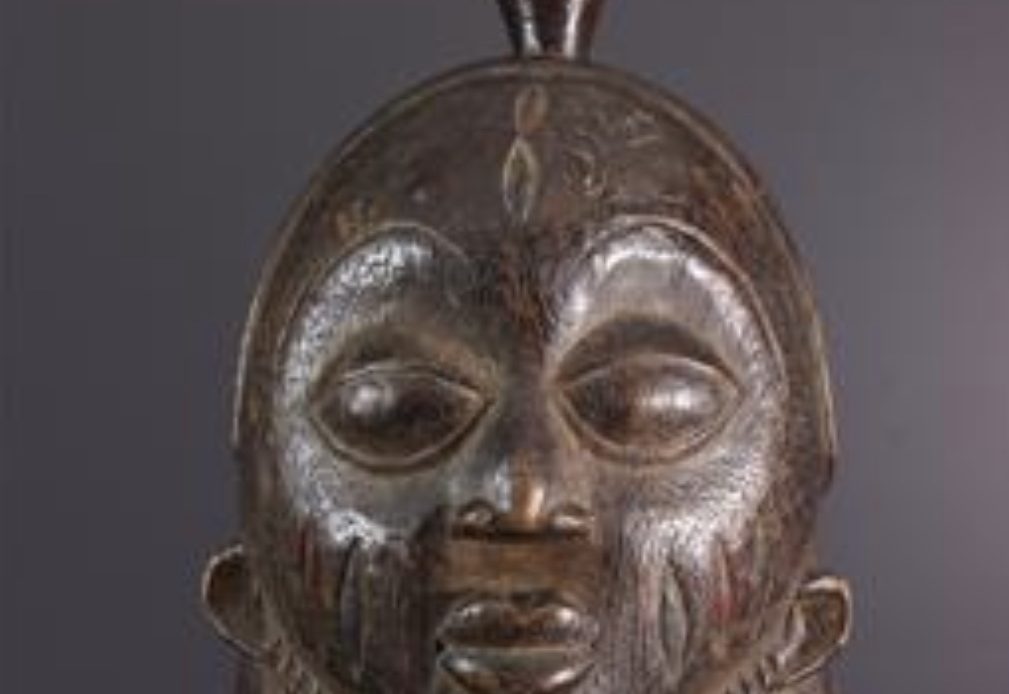The Gẹ̀lẹ̀dẹ́ Heritage

The exploits of traditional women such as Queen Amina of Zazzau, Orompoto; the first and only female Alaafin of Oyo, women-only movements in the South-East and the Gẹ̀lẹ̀dẹ́ social order is proof that the Nigerian tradition upholds the idea of female-led leadership. Today, we focus on the Gẹ̀lẹ̀dẹ́ heritage and its social impacts in the Nigerian society.
The Gẹ̀lẹ̀dẹ́ heritage was inscribed in 2008 on the UNESCO Representative List of the Intangible Cultural Heritage of Humanity originally proclaimed in 2001. The Gẹ̀lẹ̀dẹ́ is a public display of colourful masks which combines art, culture and dance to amuse, educate and worship. The ceremony is performed by the Yoruba community and neighbouring countries such as Togo and the Benin Republic. For over 100 years, the Gẹ̀lẹ̀dẹ́ ceremony has been performed to pay tribute to the primordial mother Iyà Nlà and to the role women play in the process of social organization and the development of the Yoruba society.
The Gelede ceremony is held annually after harvests or at important events. The ceremony is characterized by carved masks, dances and chants, sung in the Yoruba language. During the ceremony, the singers and drummers are usually the first to appear, accompanied by an orchestra and the masked dancers wearing colourful costumes. A lot of efforts and preparations are put together into making the Gẹ̀lẹ̀dẹ́ ceremony a successful one, especially with the production of craftwork which includes mask carving.
Gẹ̀lẹ̀dẹ́ and its Impact on the Yoruba Culture

The Gelede creates a social agenda that rests on the Yoruba maxim Eso l’aye (The world is fragile). This emphasizes caution, diplomacy, consideration, respect for mothers and harmony.
Gẹ̀lẹ̀dẹ́ Costume and Headdress
During the ceremony, the Gẹ̀lẹ̀dẹ́ masks (headdress) are worn with an elaborate costume. The mask is worn on top of the head while the wearer’s face is covered with a veil. The brightly-painted masks are made in form of a human head, with motifs that are intended to entertain and at the same time, address social concerns that may be expressed in songs and dances. The mask is the most essential costume during Gẹ̀lẹ̀dẹ́ performances and this explains why individuals or families will go lengths to make their’s more attractive and humorous. The Costumes of the Gẹ̀lẹ̀dẹ́ performance is connected to women and motherhood. The baby sash for example represents a breastfeeding mother who also serves as support to society.
Gẹ̀lẹ̀dẹ́ Spectacle
The most elaborate Gẹ̀lẹ̀dẹ́ performance occurs during the annual festival. However, the size of the event is determined by sponsorships. Once the exact dates of the festival are fixed through divination, the Iyalase notifies the paramount chief of the community and the important subordinate chiefs. Messages are then sent to all members of the Gelede society outside the town to return home for the celebration. The festival usually begins with an all-night concert called efe, which features the Efe male mask, for satirical, entertainment and educative purposes. The Gelede ceremony involves well-practised dance, singing, music and drumming. The performances are done by men, wearing masks that include sculptured images of animals, people and objects. The men disguise themselves as women to amuse the mothers who are considered very powerful. Their powers are especially linked to childbirth.
Read Also: Queen Amina
The Gẹ̀lẹ̀dẹ́ and Social Impacts
The Gẹ̀lẹ̀dẹ́ ceremony promotes social harmony as it involves both men and women within the society. However, its connection to Iya Nla, or the Great Mother, has fostered a large number of female members. This is also rooted in its connection to motherhood as well as the belief that participation within this society helps in the fertility of the women.
The Gẹ̀lẹ̀dẹ́ Women-Centric Leadership
Iyalase, the Chief Priestess is the head of the Gẹ̀lẹ̀dẹ́ society. She serves as the main person of communication between Iya Nla, the community, and the Gẹ̀lẹ̀dẹ́ society. On the other hand, Babalase, the Chief Priest, is concerned with the organization of the Gẹ̀lẹ̀dẹ́ ceremony. As well as being the organizer of Gelede events, he is also the official keeper of the Gẹ̀lẹ̀dẹ́ headdresses and costumes.
Do you know of any female-led society in your culture? You’re welcome to share.
